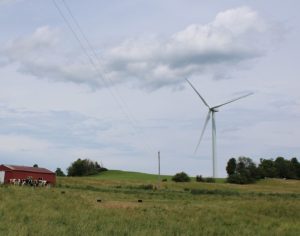Winter wheat production in New York this year is forecast at 7.37 million bushels, up 38 percent from the 2012 crop, according to the USDA’s National Agricultural Statistics Service, New York field office.
An increase in acreage harvested and a record-equaling yield resulted in the higher production, the field office said. Wheat acreage is estimated at 110,000, up 25,000 from last year. Yields are expected to average 67 bushels per acre.
New York hay stocks on farms on May 1 totaled only 150,000 tons, a record low level, the field office said. Last year, the state’s farms had stored 327,000 tons.
(Sponsored)

Does Your Nonprofit Need an Annual Audit?
Many people wonder if a nonprofit needs an annual audit, and the answer is—it depends.Although there is no federal requirement that all tax-exempt organizations undergo an audit, many possible triggers

Cybersecurity in Today’s Remote Work Environment
The response to the COVID-19 pandemic demonstrated that remote work was viable for many companies. Today, remote and hybrid work models have become standard options for most professionals. While remote
Nationally, winter wheat production is forecast at 1.49 billion bushels, down 10 percent from 2012, the USDA reported. Area harvested for grain is forecast at 32.7 million acres, down 6 percent from last year.
As of May 1, the United States yield is forecast at 45.4 bushels per acre, down 1.8 bushels from the previous year.
All hay stored on U.S. farms on May 1 totaled 14.2 million tons, down 34 percent from a year ago. This is the lowest May 1 stocks level on record, the USDA said.
Record-low May 1 hay-stocks levels were also established in Connecticut, Illinois, Michigan, Minnesota, New York, Ohio, Vermont, and Wisconsin.
Last year’s historic drought led to a substantial decrease in hay production, and therefore beginning stocks for many states, according to the USDA. In many areas, the limited availability of native feedstuffs forced farmers to feed their herds earlier than normal. Additionally, a cold, wet spring has limited pasture growth, causing prolonged dependence on supplemental roughage and feedstuffs in portions of the Midwest, the department said.
Contact The Business Journal at news@cnybj.com



